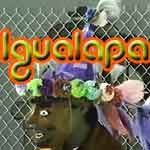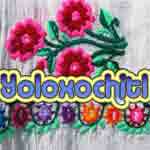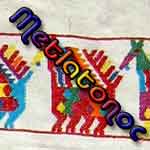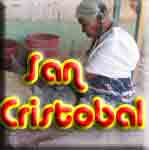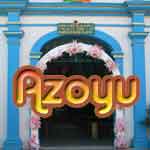 |
 |
 |
 |
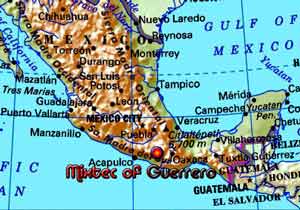 |
|
The Mixtec call themselves the Ñuu Savi that means the "people of the clouds". They live primarily in the State of Oaxaca, with 25% in the States of Guerrero, and a small number in Puebla. They are one of the largest groups in Mexico with more than 500000 people. The Mixtec of Guerrero number close to 110,000 native speakers with 5 distinct dialects of the language. They include (1) the San Luis Acatlan where Yoloxochil is located (2500 speakers).(2) Xochapx with approximately 10000 speakers (in 14 villages)located in Eastern Guerrero, near Metlatonoc.(3) Metlatonoc 60,000 to 65,000 located in Eastern Guerrero, Metlatonoc, San Rafael, other towns south there. The weavers in this area are very talented, to date the area is not documented with photos of the region, however there are some wonderful huipils in the collection . (4) Alacatlatzala region the highland Mixteco18,000 to 20,000 Eastern Guerrero, towns of Alacatlatzala, Ocuapa, Potoichan the region has mountains almost 7000 feet high. (5) Finally, the Ayutla region with 8500 speakers.
Located in Oaxaca there are 189 municipalitiesn in the districts of Silacayoapan, Huajuapan, Juxtlahuaca, Coixtlahuaca, Nochixtlán, Teposcolula, Tlaxiaco, Putla y Jamiltepec there are 14 other districts with a minor presence in other areas. There are many different ecologies ranging from High Mountain to coastal plains. Historically the Mixtec are divided into Alta (1700 meters) and Baja or Coastal regions . According to the 1990 census, about 400000 people still spoke Mixtec, according to the Summer Institute there are at least 25 dialects including Cuicatecos and Trique, and Amusgo.
Mixtec is the language is the language of choice in all cases except when it becomes difficult to understand each other between the different dialects, then they speak Spanish. There is a high index of illiteracy in the region. The Mixtec often migrate to the large cities in both Mexico and the US in search of employment. The economic activity in these regions is primarily traditional agriculture.
The Mixtec are believed to have begun habitation of the region 6000 BC and began developing there towns around 700 BC. The period between 300 AC to 1000 AC cities and ceremonial centers were built along with the development of state religion and the organization of the state by city, town and village. There are 96 know archeological sites in the region. There was contact between the Mixtec and Xochicalco and Teotihuacán (the great ceremonial centers of commerce and culture in central Mexico). The Mixtec had a system for writing that are some of the best preserved they include the codices Víndobonensis, Nuttall, Bodley, Selden, Rollo Selden, Teozacualco y Nativitas.
|
Home - The Collection - Indigenous women- Bob's Top 10 - Textile Patterns - Documented Villages - Participate The Store Other traditions Video Page Email me at: mexican@mexicantextiles.com
© 2006 Bob Freund All Rights Reserved |
